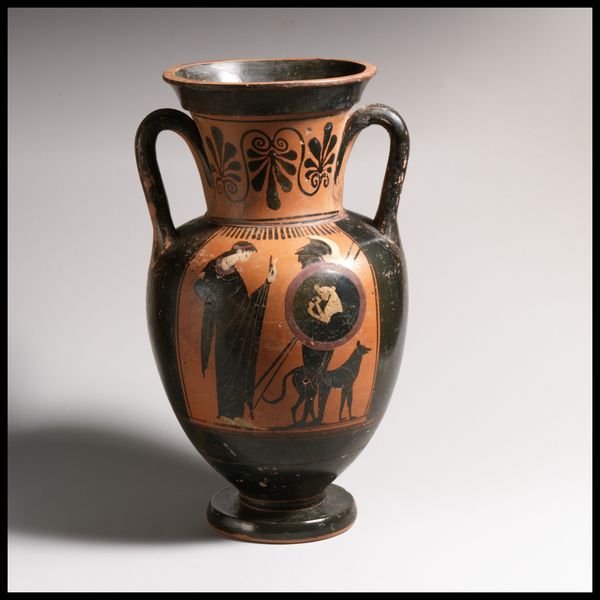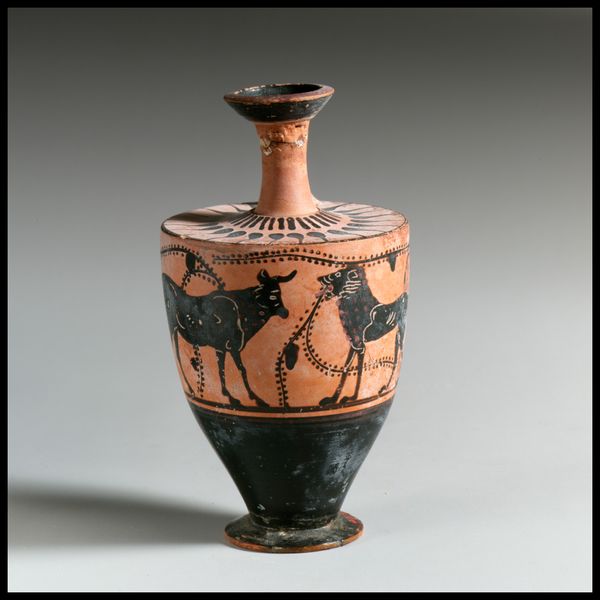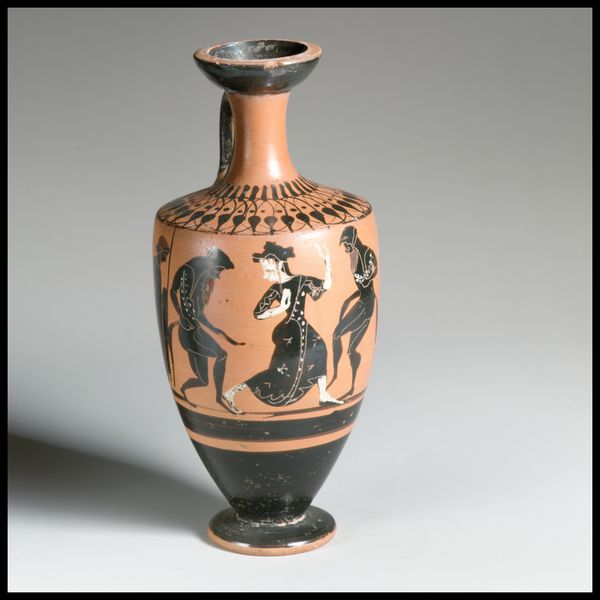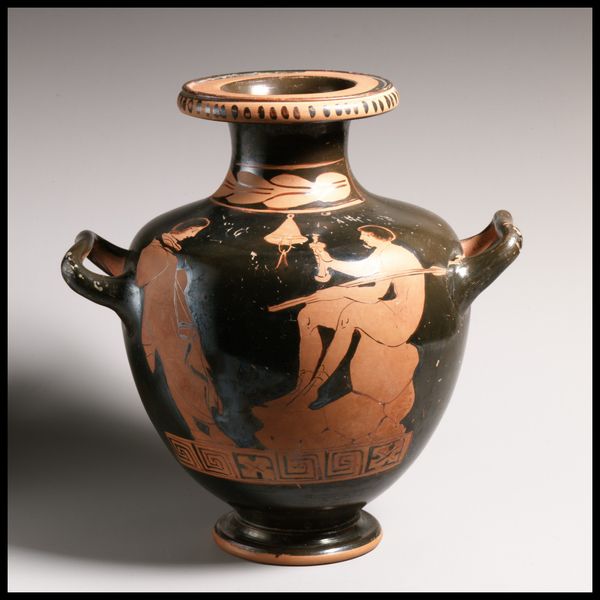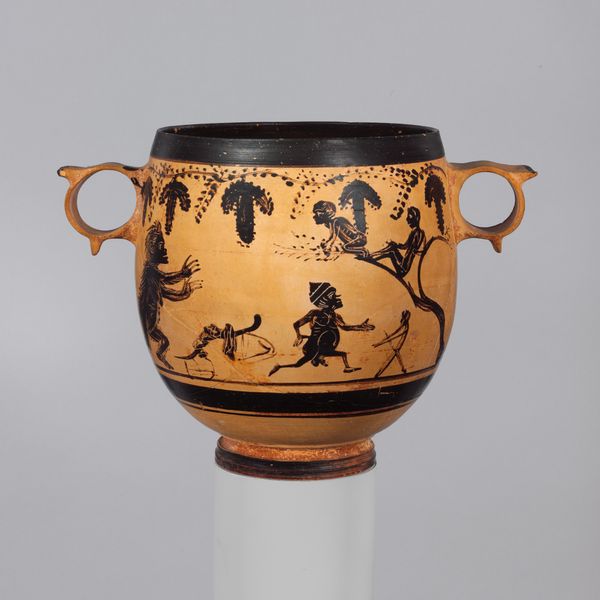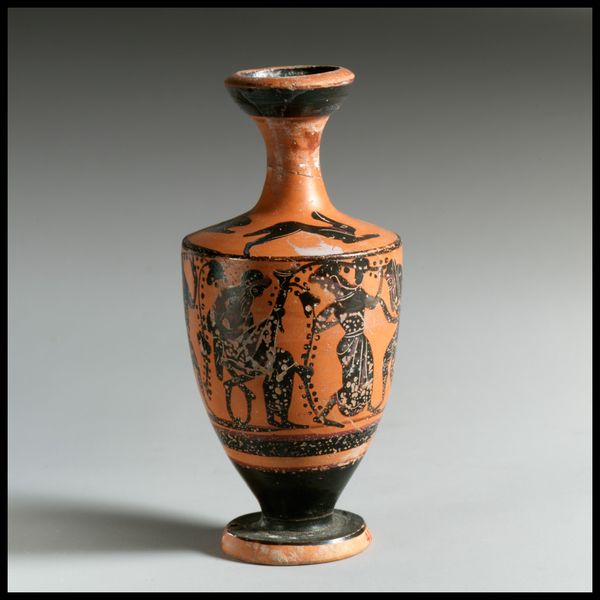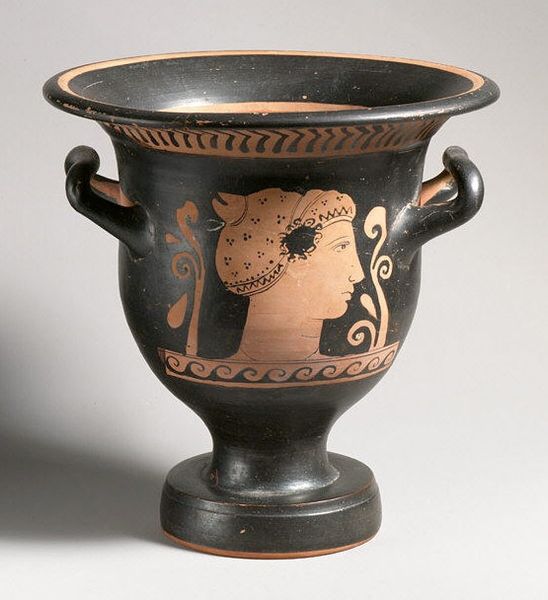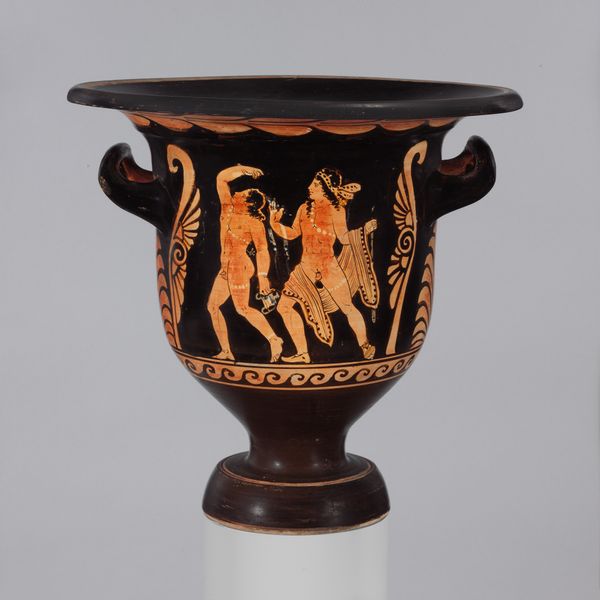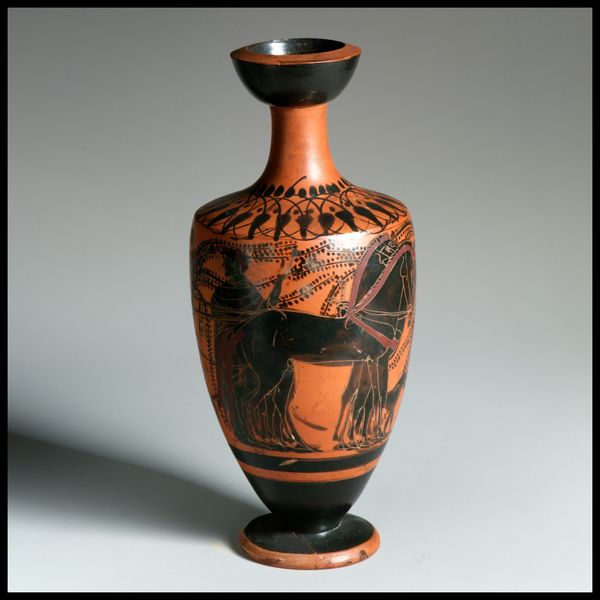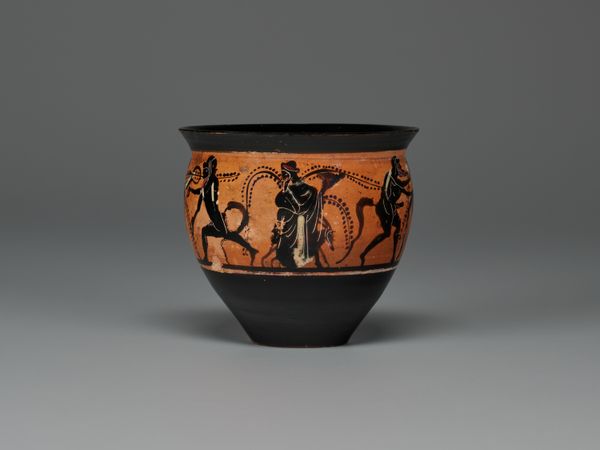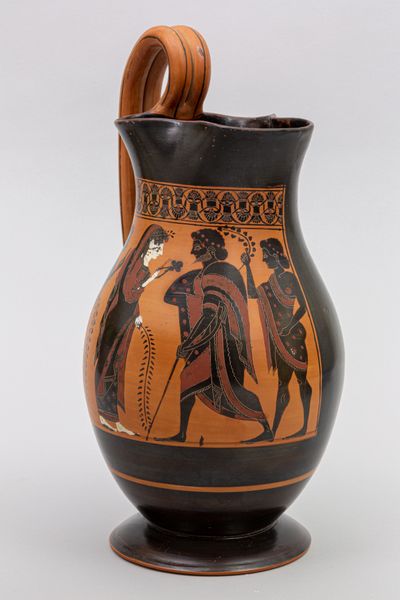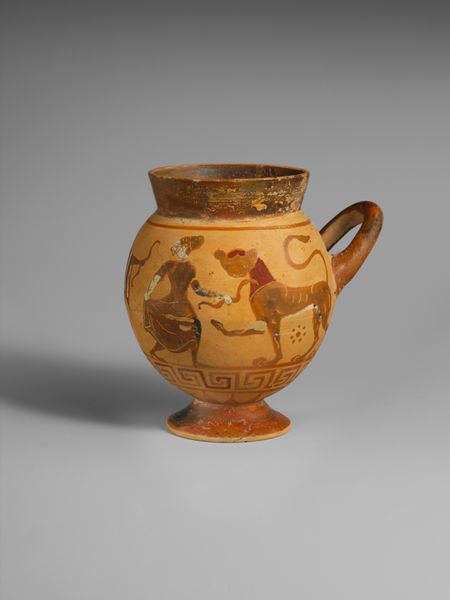
#
decorative element
#
egg art
#
pottery
#
product fashion photography
#
vase
#
culinary art
#
roman-art
#
stoneware
#
ceramic
#
men
#
food art
#
earthenware
#
food photography
Dimensions: Overall: 4 1/8in. (10.5cm) Other (width w/ handles): 7 3/16 in. (18.3 cm) Diameter: 4 1/4 × 2 in. (10.8 × 5.1 cm)
Copyright: Public Domain
Curator: This is a Skyphos, made around 350 BC, attributed to the Group of Altenburg 331, currently held at the Metropolitan Museum of Art. The stark contrast in colors is rather striking, don't you think? Editor: Absolutely! It's deceptively simple. The red figures stand out so boldly against the black. I’m curious about what the process of creating this type of pottery was like? Curator: That's precisely the right question. The process is key to understanding its value. We need to think about the social and economic context of its creation. These weren't mass-produced items. How do you imagine a potter would have secured their materials? What kind of kiln would have been necessary to fire the clay and achieve those sharp color distinctions? Editor: It sounds like sourcing materials would have been pretty labor intensive. The black must be some sort of slip? And the red is just the color of the fired clay? Curator: Exactly. Think about the control needed to achieve that consistent black gloss in the firing process - probably using a three-stage firing. What does that level of craftsmanship suggest about the status of the potter in society? Also, consider who would have used this Skyphos, what were their consumption patterns, and how does its decorative function relate to larger socio-political concerns. Editor: So, the production itself, the skilled labor, the materials—it all elevates the Skyphos beyond just a functional object? Curator: Precisely. And questions around labor and materiality help challenge those traditional boundaries of "high art" versus "craft," shifting our attention towards how art is produced and consumed. Editor: I never considered all the work involved, and how it connects the object to ancient society. Curator: Examining its materiality truly unlocks the rich history embedded within.
Comments
No comments
Be the first to comment and join the conversation on the ultimate creative platform.
